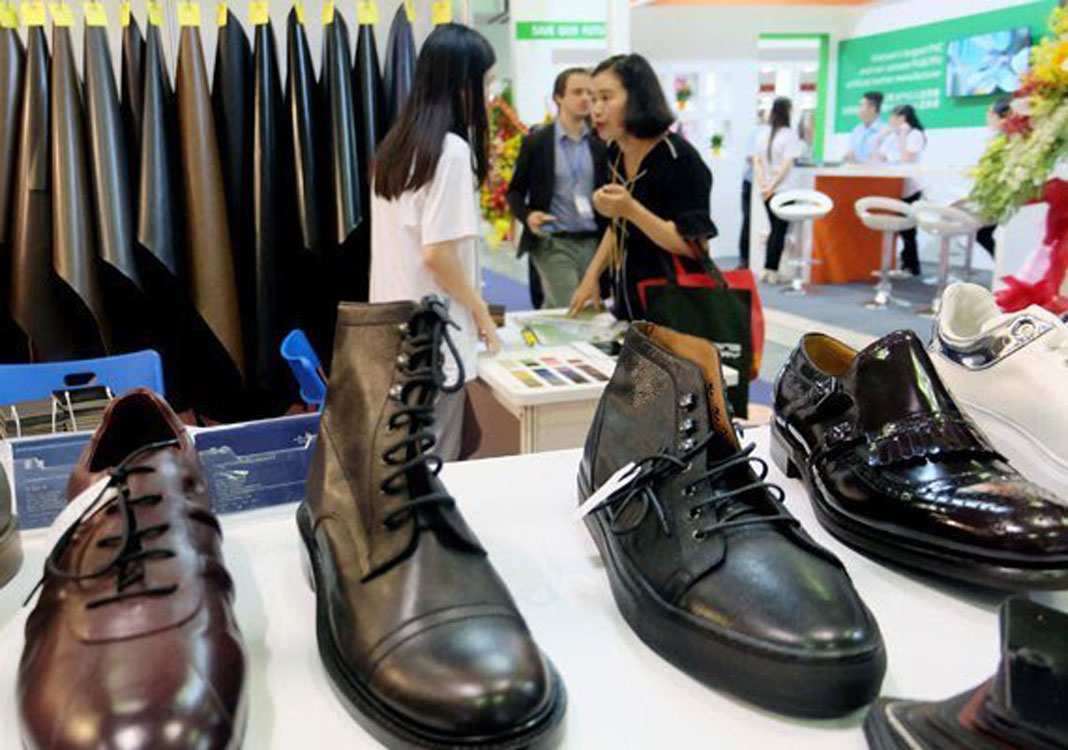HCMC – Amid the Covid-19 pandemic, many foreign buyers have highly valued the capability of Vietnamese leather and footwear enterprises, especially in terms of design and research & development, paving the way for them to take the initiative in supply chains.
Thanks to the effective control of the pandemic and the signing of new-generation free trade agreements, the local leather and footwear industry is gradually recovering.
China, which supplies half of the leather and footwear products to the global market, enhanced the import of the products from Vietnam last year, Nguyen Duc Thuan, chairman of the Vietnam Leather, Footwear and Handbag Association (LEFASO), said at a conference on January 12 to review the sector’s performance last year and come up with plans for this year.
According to LEFASO, the revenue from leather and footwear exports was US$19.5 billion last year, down 11% over 2019. However, leather and footwear exports to China increased 15%, the highest ever growth.
Despite being heavily affected by the pandemic, the sector’s production activities have been maintained and enterprises have still retained laborers.
Thuan said Vietnamese leather and footwear enterprises have proved their capacity to combat Covid-19, while importers have approved the designs of local firms online.
Despite the complicated developments of the pandemic in the United States, Europe, Japan and China, domestic firms have secured long-term orders.
Banks have offered lending rates of 2-3% per year, which are low compared with the rates in the previous years, paving the way for enterprises to expand their investment and increase their capacity, Thuan noted, adding that local firms should meet requirements on environmental protection and prevent trade fraud.
According to LEFASO Vice Chairman Phan Thi Thanh Xuan, 95% of locally-made leather and footwear products are exported. The United States and the United Kingdom account for 70% of Vietnam’s leather and footwear exports.
Suppliers should meet environment and labor standards and must accept small orders as buyers require suppliers to quickly respond to the demands of the market, focus on simple and basic goods as well as the quality of materials, Xuan said.
Suppliers must also meet stricter requirements, such as a 30% reduction in the delivery time, the transparency of supply chains and ability to produce diverse goods.
The prices of Vietnam’s leather and footwear products are 1.7 times higher than the world’s average, LEFASO stated, citing the International Footwear Association.
However, the sector’s supporting industries remain dependent on imports.
Therefore, Vietnam should issue policies to develop centralized clusters to produce leather and footwear products and materials, thus helping the sector take the initiative in the supply of materials and improve its competitiveness.
Moreover, the relevant agencies should join hands to build training, research, trade promotion and fashion centers at home and abroad.
At a workshop, “Policy, regulatory and administrative reform to boost development of Vietnam leather, footwear and handbag sectors”, held by LEFASO and the U.S. Agency for International Development (USAID) on January 12, director of USAID in Vietnam Ann Marie Yastishock said the leather and footwear sector had been seriously affected by Covid-19. Enterprises in the sector will continue facing more challenges in the future.
Therefore, through the LinkSME project, USAID, the Vietnamese Government and LEFASO have joined hands to come up with development strategies for the sector.
By Hung Le









